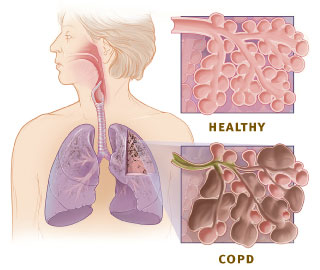Chronic middle ear effusion without the symptoms of acute infection is termed otitis media (OME) with effusion and can be sequel to acute bacterial otitis media.
Otitis media with effusion (OME) is the most common cause of hearing impairment in children potentially causing language delays; learning and behavioral problems.
 Image via Wikipedia
Image via Wikipedia
The incidence of OME in US is about 2.2 million with an approximate annual cost of $4.0 billion. At present a surgical procedure aimed at ventilation of the middle ear called tympanostomy through placement of a tube, also known as grommet remains the standard treatment for OME. About 30,00 such procedures are also conducted in in UK annually.
The mechanism of action of such procedure though remains uncertain; most likely works by relieving the state of relative lack of oxygen called hypoxia that is a common feature of inflamed area/environment as well as by relieving negative pressure in middle ear and fluid drainage from there.
Researchers investigated the role of hypoxia and hypoxia-inducible factors (HIF) mediated responses in genetically modified (Mutant) Junbo and Jeff mouse models, who spontaneously developed chronic otitis media.
HIF upregulates the other markers of inflammation including vascular endothelial growth factor (VEGF). VEGF induces new blood vessel formation (Angiogenesis), increases vascular permeability; helps in migration of white blood cells responsible for defense, the neutrophils and macrophages. Thus VEGF may contribute to OM by helping in the accumulation of fluid and inflammatory cells within the bulla causing conductive hearing loss and secondary inner ear (cochlear) dysfunction.
The researchers investigated the role of small-molecule inhibitors of VEGFR signaling (PTK787, SU-11248, and BAY 43-9006); and destabilizing HIF by inhibiting its chaperone HSP90 with 17-DMAG.
They found that both classes of inhibitor significantly reduced hearing loss and the accumulation of fluid; and that VEGFR inhibitors reduced angiogenesis and lymphangiogenesis in the inflamed middle ear mucosa.
The effectiveness of HSP90 and VEGFR signaling inhibitors in suppressing OM in the Junbo model supports the proposition that the HIF–mediated VEGF has a critical role to play in establishing and maintaining OM. Therefore, targeting molecules in HIF–VEGF signaling pathways has therapeutic potential in the treatment of chronic OM.
The practical clinical implications for using small-molecule VEGFR signaling inhibitors or other anti-VEGF agents and HSP90 inhibitors are limited in pediatric applications as they are used principally for the treatment of cancer.
Local delivery of the drugs can be a solution to achieve therapeutic level and at the same time reduce any adverse effects caused by systemic administration.
The findings on the genetic bases for OM in the Junbo and Jeff mutants mouse models have highlighted the importance of hypoxia mechanisms in the development of chronic OM and targeting the pathways may have the potential of developing new therapeutic strategies; which may need further exploration.
...
Click here to Subscribe news feed from "Clinicianonnet; so that you do not miss out anything that can be valuable to you !!
...






